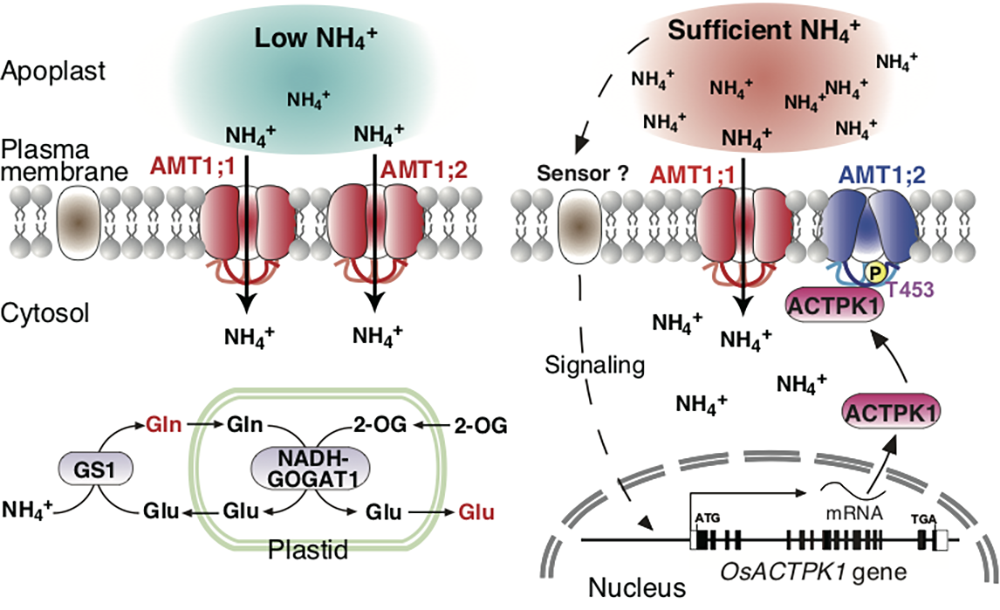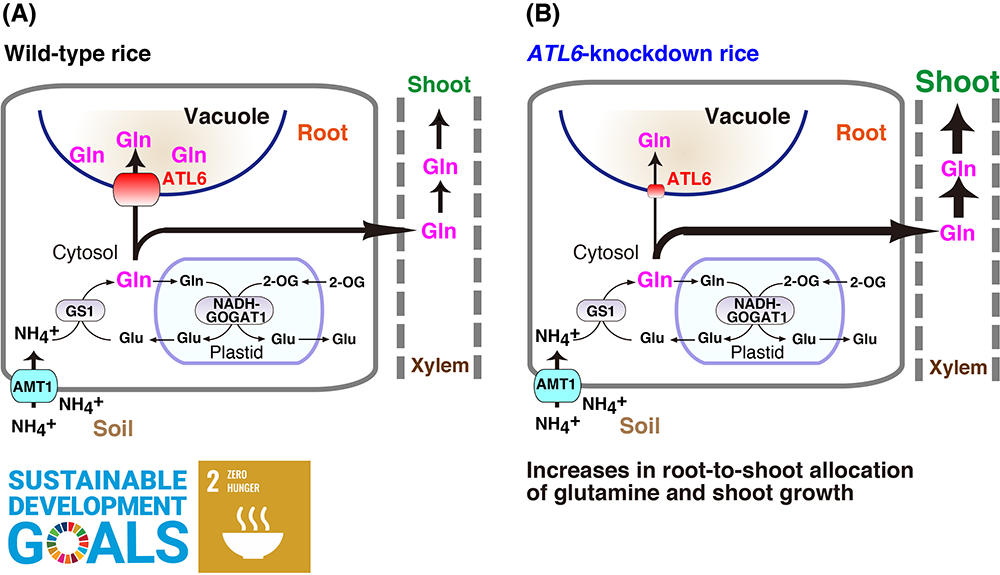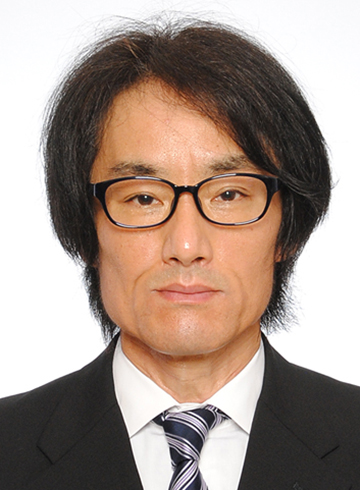| Name | HAYAKAWA Toshihiko |
|---|---|
| Affiliation | Laboratory of Plant Cell Biochemistry, Biochemistry, Agricultural Chemistry |
| Position | Professor |
| Tel | +81-22-757-4277 |
| Fax | +81-22-757-4277 |
| toshihiko.hayakawa.a7*tohoku.ac.jp(Please replace * with @) | |
| Research Interest | Plant Cell Biology, Plant Physiology and Metabolism, Plant Cell Biochemistry, Plant Nutrition |
| Career | Education: B.S. Faculty of Agriculture (1988), Ph.D. (Agri.) Graduate School of Agricultural Science, Tohoku Univ. (1993) Research Experience: Research Fellowship for Young Scientists from JSPS (1992―1993), Assis. Prof., Tohoku Univ. (1993―2001), Assoc. Prof., Tohoku Univ. (2001―2023), Prof., Tohoku Univ. (2023―) |
| Research map | https://researchmap.jp/read0180316?lang=ja |
| Research Projects | |
|
Molecular mechanisms underlying ammonium uptake and use in rice Nitrogen is a major limiting nutrient in plant growth and productivity. Plants have evolved sophisticated mechanisms for efficient nitrogen acquisition and use, allowing them to cope with fluctuations in availability. In flooded paddy soils, wetland rice, an important mainstay crop, preferentially takes up ammonium as a nitrogen source. However, an ammonium supply at high concentration is toxic to many plants. Thus, rice has acquired mechanisms for highly efficient uptake and use of ammonium. External ammonium is absorbed by epidermal and exodermal cells at the root surface via ammonium transporters AMT1;1 and AMT1;2. Most of the absorbed ammonium is assimilated into glutamine via glutamine synthetase 1;2 (GS1;2) and NADH-dependent glutamate synthase 1 (NADH-GOGAT1). Glutamine is then transported radially inward from the surface cells to central vascular tissues and subsequently allocated to the shoot through the xylem, thus fulfilling the growth requirements of above-ground organs. GS1 and NADH-GOGAT are also important for nitrogen recycling from senescent organs via phloem to developing organs. I am trying to unravel these complex mechanisms including signal transduction in order to improve nitrogen use efficiency and growth of rice for achieving more productive and sustainable agriculture towards SDGs (Target 2.4). | |
| Research Seeds | |
 URL: https://www.agri.tohoku.ac.jp/en/activity/research/17/index.html |
|
 URL: https://www.agri.tohoku.ac.jp/en/activity/research/23/index.html |
|




